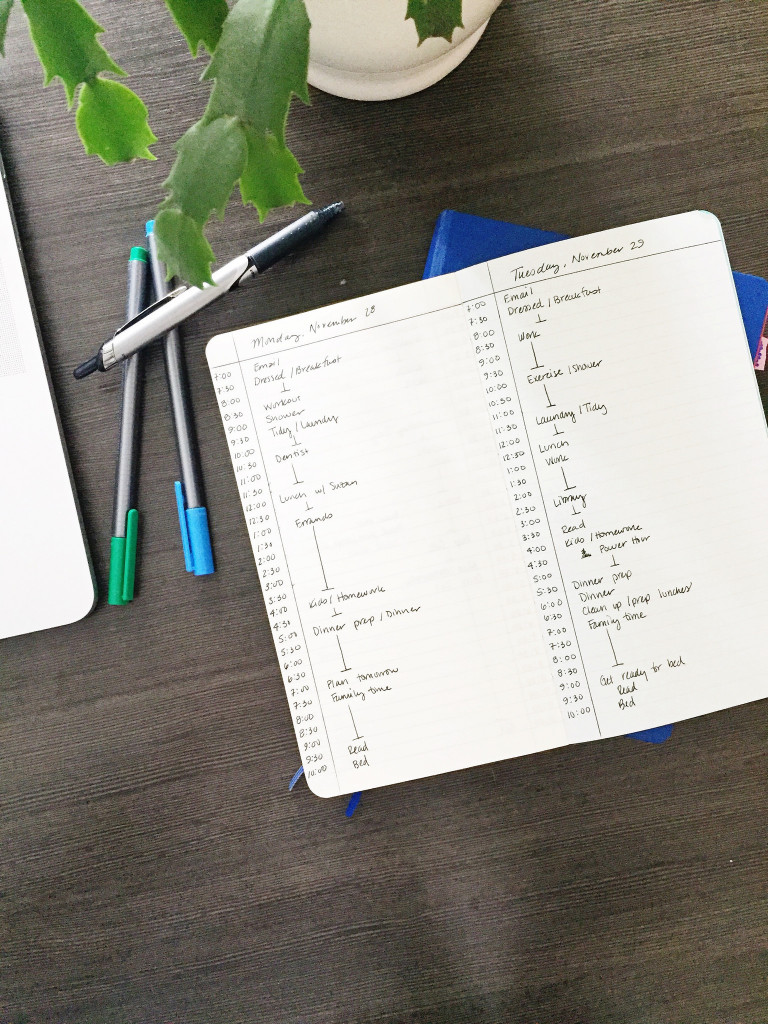2016 was the year when it seemed that my productivity goals all seemed to fall into place. I’m an odd mix of a productivity junkie (anything with the keywords “be more productive” or “get things done” is like click-bait to me) and a dreamer. Sometimes I dream about big things, sometimes I’m a fiend about getting little things done, but rarely have those big dreams and little things intersected into anything that resembles a balance of accomplishment.
Something clicked when I read Laura Vanderkam’s 168 Hours: You Have More Time Than You Think. For years I told myself that when X, Y, or Z happened, I’d finally have time to do the big (and little) things I wanted to do. When Eli goes to school full-time, I’ll be able to really launch my blog. When I stop spending so much time blogging, I’ll get my photos organized. When I finish this project, I’ll get my writing career off the ground. I know we’ve all said similar things, only to find that we’re no further along. Those extra magical hours never materialized.
Vanderkam encourages readers to conduct a time study on themselves. For a minimum of one week (which contains 168 hours), you are to write down everything you do and how long it takes you to do it. Sleeping, eating, watching TV, commuting, housework, scrolling through Facebook … it all gets accounted for. I did this for a week last summer and it was so incredibly informative. Some things were good. I get an average of 8 hours of sleep a night. I exercise roughly 4 hours a week. I don’t spend excessive time in the car or watching television. On the flip side, I spent more hours than necessary on housework, email, social media and, oddly enough, socializing.
After you conduct a time study and know where you can cut back to create pockets of time, Vanderkam suggests making a list of 100 dreams. These are things you’ve always wanted to do, from the very big (Go to Paris!) to the very small. (Put our Disney photos in an album.) Creating extra time in your week is wonderful, but what purpose does it serve if you don’t spend it intentionally? And how can you be intentional about the way you spend your time if you don’t identify what’s important to you?
Once you have your list in hand and a general idea of how you spend your time vs. what can be minimized, Vanderkam recommends planning your week using the strategy of block scheduling. Listing out the hours in the day, you give a name to how you’ll spend those hours. For someone who lived by a never-ending to-do list, this was revolutionary. I’d make lists with items like fold laundry, meal plan, write, email Lisa, call Amy. Then the laundry would never end, or the email would turn into 10 emails, which would bleed into a few minutes on Pinterest … you get the idea. Things that had to get done got done, of course. We always had meals on the table, clean underwear, and phone calls returned. But those nebulous, dreamy plans or those someday maybe projects never got started. I mean, who has the time, right? It’s one of Gretchen Rubin’s Secrets of Adulthood: “Something that can be done at any time is often done at no time.”

I’ll go deeper into block scheduling in a future post, but for now here’s the gist. I plan out the week with goals in mind for my 4 necessary life categories: work, home, self, and relationships. I have 3-4 goals for each, and as I plan out each day, I schedule blocks of time to work on those things – and only those things.
Making my list of 100 dreams was both a fun and useful way to get a bigger picture of what really mattered to me. What stood out was that my big dreams involve travel, creating a cozy home in which we are surrounded by meaningful things, getting the most out of my time with the kids while they’re still around, and finding creative work that satisfied me while helping us reach our financial and travel goals.
When those things are laid out there, you have a more clear picture of how you want to spend your time. I keep coming back to housework, because apparently I have a strange issue with doing too much housework. (I spent a whopping 24.75 hours in a week cleaning, cooking and doing laundry. AN ENTIRE DAY OF MY LIFE EVERY WEEK. Even I recognize that’s not normal.) Would I like to spend 6 of those 24 hours folding every last sock and polishing the toaster? Or would my 6 hours be better spent on a baby step that will get me closer to my big goals and dreams?
I started block scheduling on a (mostly) regular basis in mid-October, and a few months in I see a dramatic difference in my quality of life. I feel more balanced. I feel a satisfaction in my work and personal life I haven’t felt in, well, ever. I have a sense of peace about my days – I’m doing what I’m meant to be doing at exactly the time I’m doing it. It’s far from perfect. I still have weeks where it feels like I’ve been derailed and nothing gets done. I still have to fight urges to engage in time wasters. But I feel progress and hope, which feels pretty darn good.
Just for fun, I’ll share my list of 100 dreams in the next post. Then I’ll do a deep dive into my block scheduling process so you can give it a try as well. For now I’d love to know: what would you do with a few extra hours every week?


[…] recently shared the experience of conducting a time study on myself, and how it shaped the way I plan my days and weeks. This self-reflective project was inspired by […]